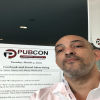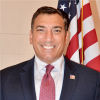
KNOWLEDGESTREAM AT-A-GLANCE
The Sprinklr CMO Advisory Board: Defining the Future of Marketing
ABSTRACT
Title: The Sprinklr CMO Advisory Board Tagline: Defining the Future of Marketing About: Marketing is now the most distinguishing, critical function for business. Today, marketing is responsible for building relationships with a company’s top asset – the customer. Connecting with customers is no longer about broadcasting a clever message. In our social world, it’s what customers say about brands that truly matters most. This new reality requires a fundamental shift in marketing strategies. The CMO Advisory Board brings together passionate leaders to discuss current industry challenges and define the future of marketing. Through a series of virtual and in-person events, members will share their world-shifting visions for the future of marketing, advertising, social media management and more. The CMO Advisory Board is a forum of ideas – the bigger, the better – for how brands can offer game-changing customer experiences on every touchpoint imaginable.
PARTICIPANTS















OBJECTIVES
1. Engage the broad topic of Future of Marketing: Ask for challenges, drivers, trends and frictions related to the state of marketing today
2. Begin to seed Sprinklr specific content: Introduce the first Sprinklr theme and ask experts to discuss benefits and ability to scale, supported by examples.
3. Understand competitive products: Probe MarTech solutions as a solution for Human to Human marketing - how they integrate platforms and technology
4. Understand CMO pressures and ability to impact change: Ask experts to discuss how they deal with accountability pressures -- and how they respond to the C-suite.
End Date: Dec 16, 2019
CONTRIBUTIONS
ACTIVITY
345 Days
24 Themes
99 Contributors
596 Posts
640 Comments
499 Followers
OUTPUTS
23 Slide Deck
23 Blog Post
1 Video
38 Social Post
CALLS ATTENDED
• 2019-03-19 - Check-in call
• 2019-03-19 - Check-in call
• 2019-03-19 - Check-in call
• 2019-03-28 - Check-in call
• 2019-05-10 - Check-in call
• 2019-05-30 - Check-in call
• 2019-06-06 - Check-in call
• 2019-06-27 - Check-in call
• 2019-08-08 - Check-in Call
• 2019-08-22 - Check-in Call
• 2019-10-31 - Check-in Call

• 2019-10-31 - Check-in Call

• 2019-12-12 - Check-in Call

EXECUTIVE SUMMARY
Today’s Marketing executives are navigating increasingly dynamic market, technology and talent management challenges.
There is more scrutiny and expectations for direct ROI of marketing efforts
Designing organizations of the future is increasingly challenging as teams must rapidly develop analytic, digital and social skills. This is further challenges by a very tight labor market often described as a "war on talent".
While leaders recognize the importance of data, marketers are overwhelmed with data coming from multiple places and trying to find the right tools, people and vendors who can glean actionable insights and integrate data into the organization in an efficient and effective way.
While digital and social will continue to be a key part of marketing strategies, many marketers are re-evaluating the right mix of new and traditional to ensure that core brand development occurs.
With more technology, media and personalization options, marketers are seeking vendors who can impart expertise and help organizations build the right approach to effectively and efficiently build their brands and drive results.
RECOMMENDED NEXT STEPS
Launch panel 2.0 to continue to generate content that demonstrates thought leadership…deep understanding of the challenges and needs of your target audience.
Strengthen the application of the learning by shifting panel ownership to lead generation team. This will provide more content to drive leads and support brand communication and PR.
Develop an agenda that closely aligns to Sprinklr’s 2020 business and communication priorities.
Develop a variety of content by varying panel discussion approaches e.g. best practice, examples, top X lists or case studies.
THEME #1
Exploring Human to Human marketing
THEME SUMMARY
Human to Human marketing is a critical element of a connected brand experience -- and the future of marketing.
- Authenticity fuels the desire for human connection.
- Automated marketing and Humans can co-exist.
- Social, Customer Service, Influencers and Events all contribute to successful H2H brand experiences.
- AI should be thoughtfully applied.
SURVEYS
Authenticity requires transparency and trust (human qualities)
Being genuine, authentic and behaving like a friend to the audience really works for Netflix in building a human to human interaction that has really helped in shaping a positive brand perception.
I think we're seeing an even greater divide and demand for H2H vs. pretty much everything else. Many consumers crave the trust and credibility factor that seems to accompany the H2H approach. I think consumer-facing tools should focus on H2H options while the management tools are automated.
6 ways of achieving great H2H marketing : 1. "Engagement is the new form fill." 2. Quality is more important than quantity 3. Marketing is now omnichannel 4. Your future customers come from a community 5. A renewed focus on storytelling 6. Become the trusted advisor
There is a role for both automated marketing (technology, bots, AI) and humans to co-exist. The trick is finding the right roles.
While some marketing (purchasing digital ads) can be performed well by automated systems, many categories of marketing - particularly around big-ticket purchases - benefit significantly from human influence. Edward Jones, in particular, has built their brand around personal interaction.
We're seeing the benefits of combining humans and automation. The human interactions actually train the chat bot. And the chat bot lessons the workload for people. Customers win with more timely, better interactions and have a choice--wait to speak to someone or connect online with the bot.
H2H and Automation will co-exist in the near term where H2H information is used as a pre-processor for data context and cataloging that is input into the algorithms used for automation methodologies
Successful H2H marketing requires multiple channels and touchpoints including social, customer service, influencers, and events.
When you get users to talk about your brand on social, it adds a human touch because people talk about emotions and real experiences attached with the brand. A great example is #AerieReal - they posted non filtered/retouched photos of models on IG and asked users to do the same when wearing Aerie.
A prime example of underestimating good human to human marketing lies in customer service. Often it is a source of frustration -- you can't get a human to help you. In the future, great human customer service will be a true point of difference that can and will get good reviews and buzz!
One of the hottest forms of communication and marketing in the beauty industry today is the world of influencer marketing - which is essentially human to human marketing.
While AI can be impactful, it needs to be thoughtfully applied
Automation can make humans more efficient & customer interactions smoother (chatbot support that hands off to live agents) but companies that believe the cheapest, mechanical option is best will lose out in the long run, most notably in industry/category that has a relationship component.
As automation becomes the norm, H2H will be expensive to roll out - it has the potential to positively differentiate that company from others, we're not at that stage yet but will be. B2B marketing will ultimately go the way of the dodo - either automated marketing efforts or H2H will be the future.
With advent of AI and Machine Learning, there seems to be a race between companies to apply automated marketing without giving a thought on how the customers want to interact the company at various points of product/service use.
THEME #2
How do you develop personalized programs while still driving ROI? How important is social media in creating personalized marketing? Are there any "secret weapons" you can share?
THEME SUMMARY
Personalization is becoming a more important driver for creating compelling brand experiences
- Understanding personas & behavior can drive better, more personalized experiences
- Personalization should relevant and tailored to the channel
- Over-personalization can be creepy
SURVEYS
Understanding personas & behavior can drive better, more personalized experiences
First, come up with personas - types of people that visit your site or types of clients. Second, define how your site will be different based on the personas (more relevant products, blog posts, (IA), site flow, etc). Third, define how a persona will be assigned.
Personalization activities need to build relevance in order for it to be efficient. The data points used to personalize have to bring about the triggers for conversion or action. Connecting the data points in line with the consumer journey is what we should do when personalizing activities.
As a marketer, you will need to: 1) Know your consumer and build a unified profile of them 2) Develop a personalization strategy in your marketing plan 3) Deliver highly personalized content, offers, and recommendations at the right time in their buying decision making process.
Personalization should be relevant and tailored to the channel (and make sense in context)
Your communication should be anchored to the definition of product and the relevant target. Social is just one channel - It's easier and available compared to traditional mediums - but still needs to be relevant for the consumer in context of their needs and how your product/service resolves that.
Some communication elements can be tailored with less expense. Promotional pricing can be used electronically via dynamic or algorithmic pricing, coupons or discounts. You can't personalize every element of the marketing mix and be efficient - but you can test.
Millennials are notorious for ignoring phone calls and opting out of e-mails, so text messaging is an obvious solution. 80% of millennials are waiting for when they can text a brand’s 1-800 number, versus calling. This would make customer happy ands ave the business money in terms of support costs.
Over-personalization can be creepy (there's a fine line).
An important lesson learnt : any touchpoint should not behave like it knows it all, or i-know-you-more-than-you-are-comfortable-with, and leave room for the user to explore and decide their options.
Personalization must be value-additive, either creating a feeling of genuine connection or making product/solution offerings more relevant. Personalization for its own sake - particularly in low-touch, commoditized businesses - may not bear fruit, and over-personalization can be counter-productive.
THEME #3
With so many options in the MarTech stack, how do you choose?
THEME SUMMARY
With so many options to choose from (5000+), there is no obvious solution to figuring out the optimal MarTech stack
- Your MarTech stack should be part of a broader enterprise architecture
- It's about trade offs
- Aligning to your business priorities and needs is essential
SURVEYS
Your MarTech stack should be figured out in context -- and part of a broader enterprise architecture
MarTech needs to fit into a broader enterprise architecture. The reasons are: -if martech is treated separately, there may be integration and compatibility issues with other systems -minimize licensing costs as well as overhead -greater support quality and scope -maintenance is usually easier
Features every stack should have: 1) Integration with core technology 2) Single source of truth for data; a complete customer view 3) Real-time information 4) Data that provides attribution (where your money is best spent) 5) Ability to reach customers anytime, anywhere: omnichannel experience
It's about trade offs -- there are pros and cons to both point solutions and a unified platform
MarTech reflects a series of needs for an organization to more effectively & efficiently understand, target, and serve customers. I haven't seen an integrated solution that delivers on its promise nor have I found "best in class" that integrates as well as it should. It comes down to tradeoffs.
You choose a MarTech Stack based on need, company size, time horizon, available budget and don’t forget support costs in your calculation. With the Landscape so enormous in number (over 5,000) there is nowhere else to go but down through consolidations/reductions via buyouts, mergers and closures.
MarTech solution suites provide maximum value if used together. Using a single solution and not the rest, you won't be able to realize the full potential. However, every solution has its USP, in the world of customization, you should have the choice to choose based on business needs.
Aligning your MarTech stack to your business priorities and needs is essential
Our learnings: 1) Create business use cases when you are signing up (not after) 2) Understand the support system, the setup, integrations required 3) Within your organization, assign responsibilities for the tool 4) Marry technology to your business requirements.
It's helpful to ask old-fashioned "marketing fundamentals questions" when choosing MarTech, because the world hasn't changed as much as we might like to think. The choice of MarTech should deliver on the main need, and do so in a way that is broadly and rapidly useable by the people who utilize it.
We have learned to best understand the difference in our client needs and then build the martech stack around that client. Then we try and group our clients with the same need for cost savings. So NO, we have not found one set of vendors for a martech stack to use across the board for all clients.
THEME #4
How are CMOs getting ahead of marketing accountability?
THEME SUMMARY
Marketing Accountability is part of the CMO's responsibility -- as they become more like "Chief Growth Officers"
- Digital creates transparency
- There is still a push and pull between short and long term efforts
- Ensure the KPI's tie back to the plan
- Don't let ROI drive all of your decisions
SURVEYS
Digital creates transparency and the ability to quickly assess results
Social platforms have started giving better analytics and CMOs are finding it easier to showcase ROI of digital. Businesses have more confidence in higher budgets for Digital. As Martech consolidates and integrates with CRM and finance, CMOs will find it easier to show better ROI.
Digital marketing is measurable and it's great to quantify your efforts in terms of analytics. It's still a challenge to tie metrics to business objectives. Google & Facebook realize this and provide CTA’s along with videos to close the loop for the audience making marketing efforts more measurable.
There is still a push and pull between short and long term efforts
Accountability for the CMO rests in 2 areas: 1) Strategic Direction: The metric for strategy is "did the CMO's grand plan succeed against the overall ambition?" 2) Tactical Choices: The metric is "did the deployment of resources through these tactics achieve their aims, and to what degree?"
I believe in the 70:20:10 rule. Put 70% of resources in initiatives that have been proven to show results, 20% to try the ones that look like they have the potential to drive great results and 10% for going completely wild and experimenting to the fullest.
CMOs will start to feel pressure to be the 'chief profit officer', 'chief growth officer', and 'head of ROI'.' Further, I think CMOs in SaaS and subscription businesses should begin to measure customer lifetime value (CLV).
Ensure the KPI's tie back to the plan and put them in place early
Before starting, develop KPI(s) for the tool/channel, and then measure. Few assumptions are required when you can easily quantify the success of marketing. New martech is also becoming incredibly integrated allowing for detailed tracking through your funnel (or spinwheel) and all your other tech.
There are lots of ways to skin the marketing cat, depending on industry & customer base, but ALL require credible measurement and strong analytics. Without effective measurement, marketing results can devolve rapidly into a battle of competing opinions, and that's a place no for a marketing leader.
The premise of analytics is you must know what you are looking for in advance of choosing metrics and it must be relevant to the objective. Many metrics are not significant or not significant in the timeframe, creating inaccuracies/misleading results when it comes to short term or long term impact.
Don't let ROI drive all of your decisions without looking at the bigger picture
The fact that digital marketing is so measurable, and so instant, sometimes works against it. There is an expectation from digital to deliver results at a fast pace, because you see metrics right away. Sometimes, we do not give the campaign enough time to settle, and pause it before that.
In rushing to prove the value of marketing, brands lose sight of telling a 360, online/offline story. By piecing initiatives together with the purpose of proving ROI, you throw creative vision out the door and it has a negative impact as the results are not what they should be, leading to a low ROI.
Benchmarketing- a form of marketing accountability that balances the need for hard ROI metrics with an effort to broaden the value of marketing tactics that may be less measurable at this time. These are marketing tactics that may be so new or creative that no traditional metrics are in place.
THEME #5
The rise of messaging for marketing
THEME SUMMARY
Brands are leveraging messaging channels to create more engaging relationships with their consumers -- and we can expect this will become mainstream
- Chatbots are on the rise
- Brands should engage, but not be intrusive
- Go where your customers are
SURVEYS
Chatbots are on the rise, but need to be leveraged appropriately
We rolled it out our chatbot to supplement our customer success team. Prospects know they're interacting with a bot and have the option to speak to someone. It's been effective in answering straightforward questions and helping people through questions after hours.
This is an area where the melding of human & AI will have an immediate benefit for consumers (from all aspects). Chatbots turn complex tasks into more efficient, conversational processes. The benefit from a customer service standpoint is a no brainer but it goes beyond just chatting with an expert.
We found that our chatbot had to satisfy 3 areas. 1) the user had to know that they were talking to a bot. Anything else felt disingenuous. 2) 2e had to provide real value. 3) we had to create a conversation flow that was natural. Once we found that balance, our performance improved dramatically.
Brands should engage, but not be intrusive
We should utilize as rich targeting and customization as we can for the open platforms, but be very thoughtful and careful about communicating in their private space, especially in B2C. I would always ask myself : “Is it necessary? Is it empathetic? Will the receiver be comfortable with it?”
We have to find balance. We often say that we need to go where our customers are. Our customers are on their phones. Our customers are on social media. Our customers are communicating via text. The trick is to engage them in a way that does not seem like an intrusion or does not feel invasive.
Go where your customers are -- but make sure to leverage channels that are appropriate
Find out where YOUR customers are, speak to them there. I wouldn't have a B2B Financial company on Facebook, but LinkedIn & Twitter? Sure. Content should be specific to the platform, nothing is worse than cross-posting to all your channels with the same content.
Messaging platforms are an extension to the platforms that brands built over the past few years. In a regulated industry like healthcare, the key is to handle requests/messages in a compliant manner and be ready to direct customers to the appropriate channel if need be.
THEME #6
The value of social media
THEME SUMMARY
Social can boost engagement for a brand, but authenticity is key
- Social can drive deeper engagement & affinity
- Don't forget to listen vs. just talk
- Measuring social is a must for most companies, but metrics are not always clear
- Compliance is critical but can subvert social authenticity -- so it needs to be carefully thought out
SURVEYS
Social can drive deeper engagement & affinity
It starts with social engagement. If you can engage a core group of customers early on, you likely have something that will scale. You want fans who will rave about you. Early studies suggested that 15-20% of the "users" generated 80-90% of the content. If you don't have them, you'll lose.
Customer engagement can be a step to loyalty. Social sharing represents organic advocacy. Social media engagement leading to community can create business benefits & may open opportunities to actionable new business relationships. Engagement can improve efficiency. Many new customers are “viewers”.
I’ve found the best use of social to show colleagues value is highlighting the conversation happening, so you understand customer affinity. That with a number tied to performance is great, and I’m happy to highlight a post with 100 likes and tons of comments over 1000 likes and fewer comments.
Don't forget to listen vs. just talk -- and listening requires human empathy and authenticity
Social media is the best medium for a two way conversation, but at times we are so engrossed in putting out the right content & talking to the right people, that we forget to harness the power of social listening. Hence, indulge in not just “passive” listening, but “active” listening too.
Awareness is no longer as important as relevance and relevance is strongly reliant on what you’re doing on social, how you are part of and adding to the conservation - making people care again. Not sure that can be measured by big data on social media alone, it requires human-centric understanding.
Social media needs to be authentic and organic. If the process is cookie cutter and not relatable, it turns people off - especially Gen Z. Brands need to be creative, witty, timely, responsive, engaging and helpful. Social needs to be an extension of your brand and provide value to consumers.
Measuring social is a must for most companies, but metrics are not always clear
Social media is perceived differently by different people within the organization. It's important to articulate the key objectives & deliverables of social. Not everyone will understand the metrics, so it is best to define it in terms of the business impact social media can drive.
You can measure success via growth in followers & engagement, conversions from mobile, discussions, and content. But, you can't measure the value in a traditional sense. Social media for businesses is similar to customer service - a service to customers that helps brand exposure/thought-leadership.
We get the two sided feedback that leaders think they should see social media programs start up or be expanded but will say at the same time they don't believe in it for our businesses. This undermines efforts as people don't want to put energy into projects leaders are not fully behind.
Compliance is critical but can subvert social authenticity -- so it needs to be carefully thought out
Big corporations have weeks worth of "scheduled tweets" and an approval process that includes multiple sign offs. You want to engage in social yet you want to have everything planned, have a say and approve certain posts? This removes the responsive and conversational nature of social.
We partner with legal, audit, compliance & cyber security teams when crafting social policies before presenting to senior leadership. Marketing manages the programs, accounts and approvals for formal accounts while educating users/employees on representing the company on their personal accounts.
Having an existing (and regularly updates) social media playbook helps a brand stay on the front foot of dealing with problems wherever they crop up.
THEME #7
Marketing's role in protecting consumer privacy
THEME SUMMARY
Marketers must respect privacy, and be transparent with consumers about how they are handling their data
- Privacy = trust
- Marketers should be guardians of privacy
- Consumers expect a fair value exchange for their data
SURVEYS
Privacy = trust
Customer data protection is above everything else for us, because it is a reflection of the trust they place in us.
Empathy and integrity become part of the brand. Take the time to explain the what and why and give consumers options.
The consumer needs to know that their right to privacy will be respected. This is especially true in the digital world where we can upload consumer data and create lists for marketing. Consumer privacy must be a priority and not an afterthought.
Marketers should be guardians of privacy
As this issue continues to gain consumer interest/concern - it has the potential to destroy long-term brand value - instantly based on a bad business decision. Marketers must guard customer data - just as they guard their logo, employment practices and everything else that's core to the brand.
With marketing technology allowing smarter and smarter use of data, we have a critical role to play in what data to collect and how to use it. But increasingly too in how such data is governed and protected. Data protection is a key element of the transformation of the role of marketing in my view.
While there is some technical knowledge (regulations/laws, information technology, etc.) that is needed, the responsibility of consumer privacy should be a marketing responsibility. If consumer's privacy doesn't fall under marketing, then who is in charge of consumers' privacy for your organization?
Consumers expect a fair value exchange for their data
Consumers are skeptical about brand motives. They get there is a value exchange and if fair, they will be loyal. But the provision of customer information and the discerning of customer information without asking has added a wrinkle to trustworthiness & transparency between consumers & brands.
There is a very thin line between personalizing communication for the audience v/s intruding their privacy. Marketers need to respect this distinction & value customer data privacy.
Consumers will only be willing to sacrifice privacy as a trade-off if: 1) they are properly informed about data use; 2) this exchange is made under their own terms; 3) they own and control their data, and can opt-out at any time. Transparency and communication (like in any relationship) are key!
THEME #8
Care is the new marketing
THEME SUMMARY
Care can't be faked, it must be a value of the organization -- and delivered across all touchpoints. When done well, it can be a differentiator.
- Great care should be felt throughout the entire organization
- To truly care is authentic and requires empathy
- Caring about your customers is good for business
SURVEYS
Great care should be felt throughout the entire organization or it can backfire
Customers today not only look at how the company cares for them, they also see what is the greater good for the society by the company, or what are the causes the company cares about.
The foundation of fundamentals has to be in place, or whatever is on top of it will collapse. Companies that rush to "surprise and delight" before meeting expectations consistently aren't demonstrating authentic care - they're using a shiny object to distract from shortcomings - customers can tell.
Singapore Airlines is unique in how they care for frequent travelers. They always go beyond expectations. Ground staff & flight attendants are dedicated to the best experience. Rarely have I seen such consistent execution of care, from the company mission to every detail across your experience.
To truly care is authentic and requires empathy
You have to seriously care--not just for marketing purposes. It has be in context, authentic, and across all touchpoints. It shines through in actions and messages across the company. We've all experienced far too often where it falls apart, and that changes our perception of the company.
I expect care and help when something goes wrong. I don't care that mistakes happen, but it's the moment for a company to prove that they understand and fix it. Teaching employees to feel empathy and help when a mistake has been made can be an event that locks a customer to a company for life.
Ellen DeGeneres - Her brand stands for kindness, the ultimate expression of caring. Her show & actions promote kindness & caring. Even her jokes are NOT nasty - but funny & kind. Her line of clothes & home goods are soft, comfortable and easy to care for. I don't know anyone who doesn't love Ellen.
Caring about your customers is good for business
Summing up, when companies show they care for their customers it really reflects on their bottom line, either through loyalty (e.g. more frequency) or new quality leads (e.g. referrals; public reviews).
Why is care important? Monetizing existing customers is cheaper than acquisition of new customers. If a customer is satisfied, conversion is higher. You know more about existing customers than about prospects. Digital gives additional functionalities for control and increase customer satisfaction.
One company that really gets this is Chick Fil-A. They have a reputation for service with a smile and for courtesy. They will put people in the parking lot to speed customers through the drive -thru. Those are simple things. But, they go a long way towards developing a customer-first brand.
THEME #9
The new customer journey
THEME SUMMARY
The customer journey is constantly evolving and requires empathy and understanding of what consumers want
- The journey is not linear
- Brand advocacy is critical
- Consumers have expectations of getting what they want, when they want it
SURVEYS
The customer journey is not linear -- and increasingly complicated
The customer journey has become a lot more complicated. From a marketing perspective, it's critical to reduce/eliminate friction points for customers and work to not only engage them, but connect & collaborate with them in meaningful ways, making them advocates of your brand and build the brand.
There are lots of ways to go from point A (awareness) to point B (conversion). The modern customer journey allows brands to expand their paths, multiplying and adapting them to increase relevance and to improve the overall experience of a user. It's like having a conversation!
With a more interested & invested customer, the journey is anything but traditional. The journey will likely involve all of the marketing tools discussed to create a unique and authentic journey that does not stop at the point of purchase but continues to (hopefully) lead to brand loyalty for years.
Brand advocacy is critical and taking on a bigger role
Brand advocacy/championship; Again, in the traditional "transactional" journey, the last milestone was closure. Not so anymore. You don't have a *customer" until you have a customer who is also an advocate, or one who's CLV (Customer Lifetime value) one may roughly predetermine.
In the beauty & fashion industry, I see that influencers and brand advocates that recommend and/demonstrate the products have the most power in the path to purchase. Their power often outweighs any brand communication. With that in mind, marketers need to focus time and resources in this area.
Consumers have expectations of getting what they want, when they want it - and brands will need to comply
Consumers nowadays want everything there and then. This requires marketing to be much more contextual, personalized and customized. The brand needs to be omnipresent in a sense, so the customer can find them anytime, anywhere they want.
We (Figure) looked at the home equity space--45-day funding, uploading of docs, appraisals requiring on site reviews and fees, trips to the notary. What if we could do it all in 5 days, all digital. The next fastest is 23 days. We've delivered and the testimonials show it.
THEME #10
Listening to the consumer
THEME SUMMARY
Listening to the consumer is essential for today's brands to be relevant
- You need to listen holistically
- Listening requires empathy
- There can be major repercussions if you don't do it right
SURVEYS
You need to listen not just to the consumer, but to anyone who touches the brand -- throughout the entire journey
It's not just the consumer that matters but any user who interacts with the brand at any touchpoint: website, app, social media, content or physical store. It's important to listen to not just our own consumer/potential consumer, but all those who will form an opinion about the brand.
These three perspectives should be taken into account in order to have a complete view of what our customers want: 1) Internal View 2) Data View 3) External View
I've seen a ton of success being more actively in involved with customers through the design process. Getting feedback as you are developing products or marketing plans can really help create more relevant content.
Listening requires empathy
As business people we tend to have a predatory approach to customers. This is the single largest obstacle when it comes to social listening. Try thinking of your customer as a student, or as a child. Would we be asking the same questions? Would we be interested in the same things?
The problem is, that when we don't know the customer, we lose the touch/feel part of our marketing. Im a believer that the most important thing for a marketer is to know our consumers. We are rarely marketing to a target similar to ourselves, which forces us to listen, observe and learn.
Once you can look at the problem and listen through someone else's lens... is why the magic can happen on engaging them in a new ways, thinking creatively about content or new ways of approaching a customer. Having that level of intimate knowledge is where you stumble on game changing insights.
There can be major repercussions if you don't do it right
Listening to current consumers to predict future activations or marketing campaigns is extremely important. If you don't have a proper understanding of your target or current market and just "wing it", you risk failing miserably (i.e. Pepsi & Kendell).
Fortnite Avengers activation was MARVELous. They recently launched a Jordan collaboration with in-game shoe drops. Listening for both current & future marketing initiatives is important - you can do as much research as you'd like but without consumer input, you risk missing the mark.
THEME #11
Leveraging Voice for Brands
THEME SUMMARY
Voice is growing, but the jury is out on how brands can fully leverage it
- Consumers are using voice technology for basic, common sense uses today
- As voice becomes more mainstream, brands need to intuitively integrate it into their journey
- There is a huge opportunity to add value to the consumer through voice
SURVEYS
Consumers are using voice technology for basic, common sense uses today (not yet for shopping, where brands could see a big impact)
While Amazon Alexa and Google Home promise shopping by voice, I'm seeing consumers slowly responding to using it for shopping. The technology is still new and doesn't have a lot of consumer trust - meaning what I order, will that actually be what arrives without seeing a visual confirmation first.
If you ask people what they use their smart assistant's for, it is almost always just "Alexa, play {insert song here}" or "Alexa, what's the weather"" I've yet to meet a single person that has used it to shop, and Amazon's own data even supports that.
As voice becomes more mainstream, brands need to intuitively integrate it into their journey -- which requires a deeper understanding of voice technology and behavior
50% of search is expected to be done by voice by 2020 (per comscore); google voice is already on over 500 million mobile devices. You need to: -understand the nuance of a voice search over a touch search - people use short phrases and sentences for voice -ensure your website loads fast enough
For brands creating Alexa + Google Assistant Skills, it’s often difficult for consumers to remember the name of each branded skill - if you don’t remember the name, it’s often hard for Alexa/Google to locate. If a skill name is sticky, catchy, memorable - brands can have a hit by getting in early.
This will catch up soon and brands are not ready for it. Most brands are only lightly experimenting with voice. They should be heavily researching, engaging, testing and getting ready for it. With voice being built into more experiences from hotels, apartments & cars it's only a matter of time.
There is a huge opportunity to add value to the consumer through voice
I turn on my voice channel and ask - "Can you tell me the benefits of Brand X and where to buy at the best price? Can you tell me what the beauty influencers are saying about Brand X?" It will serve as a curator of information that will help my research and purchase decision.
TONS of brands have partnered with Amazon to provide a more life hack environment through Alexa - i.e. Patron mixologists, cooking recipes and other quick and easy ways to make the consumer's life easier. Isn't that what it is all about? How can I make my consumer better than they were yesterday?
THEME #12
Building Marketing Organizations For The Future
THEME SUMMARY
We explored the biggest challenges that are influencing how leaders are building marketing organizations for the future and how this impacts priorities, structure and roles. We also identfied which companies are on the leading edge.
- Technology, mindset and people are top challenges
- STructures and roles are expected to evolve to be prepared for evolving technology and needs
- Building diversity teams, that are inclusive and culturally aware are needed to get the most out of your team and market to the evolving customer base.
- There are numerous examples of very large and established as well as small and newer companies that are demonstrating best in class approaches
SURVEYS
Challenges: Having the right mindset and capabilties to leverage the rapidly changing digital and technical landscaping
Leveraging automation is our current biggest challenge, but also our biggest opportunity. Lower value tasks that are repeatable in nature should be automated where possible in order to save time, become more strategic, and free up monotonous time that typically employee's hate the most.
Mindset shifting as fast as technology - While the organization may sign up for the most advanced tech solutions, the real adoption and practical application remains low, since a mindset shift is required to derive complete value out of the solution.
Personalization and in-the-moment messaging will continue to dominate in a variety of media channels requiring brands to have more data around each consumer they are talking to
Challenges: Building teams that are inclusive, culturally aware and focused on learning. Organizations need to be highly aware and able to flex their thinking as well as skills.
creating a learning organization and one that uses brand, customer experience, marketing and sales all together to create unified, seamless interactions.
the need for speed and new skill sets in the ever changing global world... A marketing team that can flex in terms of these skills from data to tech to digital engagements with a superior delivery of creativity will be necessary to survive.
Expectations of cultural awareness and inclusion will continue to be on the rise. Brands will be expected to understand what's happening in culture and create inclusive marketing.
There is broad recognition that roles and structures need to change. Expect to see new roles and ones where multiple skills are needed.
Hybridized roles (such as digital marketing personnel with IT or Database backgrounds) are increasingly more desired and essential.
organizational change will come from both new roles and the evolution of current roles. Robust succession planning against organization goals will be important.
Digital media expertise will need to expand on our teams. Deeper understanding of the evolution of channel strategy will need to be built and an on-going learning plan will have to be in place
Priorities: Leaders are focused on getting the right mix of people, mindsets and skills so they are prepared for dynamic change. Actively learn and test new approaches and technologies
It will be important for brands to be inclusive with all their external facing marketing communication. Brands will need to be quick to respond and apologetic when they don't get it right.
Not being shy to try and test these new technologies. Many see it as a threat, but we see it as an opportunity to separate ourselves from the pack
Best in class is a mix of the expected like facebook and google but there are many well established companies that are demonstrating expertise
The Facebooks, Googles, etc of the world are leading in machine learning, as they have invested millions of dollars into this, and it shows in their ad algorithms, which generates billions of dollars in revenue per year.
Unilever - A huge company that has been very successful at evolving to meet the needs of marketing. They have in house experts and utilize outside agencies. share best practices globally and are leaders in purpose driven brands
People tend to ignore Jet and Walmart while falling over themselves to focus on Amazon's ever move but forget its very competent in online retailing and very successful at it.
But, you can also find examples of excellent in smaller and newer companies who built their approaches to address rapidly changing market place
Seed Beauty/Colorpop - Their brand was born on Instagram. Their marketing team is continually evolving, and leading edge in terms of digital and the required skills. Hub and spoke model. Their digital team have separate staff for each platform - email, Instagram, web etc.
it is the smaller more nimble companies that have no dollars and creative marketing teams. The lack of resource forces you to think differently and move differently than some of the bigger guys
THEME #13
High Performing Marketing Teams
THEME SUMMARY
In this topic, we did a deep dive into what is a high performing marketing team, how do leaders motivate and key questions they have
- High performing teams are defined by a combination of skills, mindset and an enabling culture
- Motivating marketing teams to be high performers requires leaders to be genuine, consistent and highly attuned to the needs of the organization and individuals
High performing marketing teams are the catalysts in their organization. The are champions of the brand and customer, flexible and results driven
An extreme focus on the customer (B2B) and the consumer (B2C). Rather than marketing products or services based on the organization’s capabilities (production orientation), marketers should market, sell and build relevant and differentiated solutions to me customers’ and consumers’ needs.
Marketing teams are catalysts. Their imaginative energy is contagious across the organization. They inspire each other, executives and broader teams and bring to life a larger purpose for the organization to rally behind.
A high performing marketing team is nimble, extremely detail oriented, and results driven. They are a great group of collaborators that feed off each each other
High performing marketing teams are curious but have focus; they take intelligent risks and learn from the past while having vision for the future
Realistic & Practical - They do not always run behind the shiny new things in marketing, till they have figured out how it will work for their business. They are realistic about timelines, result expectations & resources required.
Takes intelligent risks - In today's data driven world, only taking risks is not enough. It is important that teams take calculated, well thought out, intelligent risks that are backed by observations & predicted results.
Highly performing marketing teams are curious, They don't settle for what's been done in the past. They tackle opportunities that others have failed by learning from their mistakes. They create a learning culture and always looking for outside for inspiration
There are clear roles and each person operates in a productive and respectful way.
They're respectful. To each other. And the client. Saying they should be respectful is easy. Implementing this with disciplinary measures is how we make it happen.
key characteristics of a successful and high performing marketing team requires creativity, flexibility, knowledgeable and leaving any and all egos outside. It requires a leader that allows this team to work without micromanagement.
The team looks like a sports team -- role players, coaches with long term visions and clear ways to settle conflicts.
Culture is critical to enable high performing teams
A great marketing team has a high EQ that results in stronger communication and better problem-solving. Self-awareness, self-regulation, motivation, and empathy are a few areas that a group of marketers with high EQ will excel at.
The culture needs to be a learning culture with accountability, bias for action, and ownership as key ideals of this culture. It must reward risk taking but also always asking - "What did we learn? What can we do better next time? What is the next action we take?"
Highly performing marketing teams are successful in a culture of transparency, collaboration, and a shared visions. A culture with these attributes help teams thrive.
Being a motivating leader starts with being authentic...genuinely interested in the team's and individuals' success
Inspiration comes from being authentic with your team - motivating from a place of honest enthusiasm for the project goals while recognizing the challenges that may impact the process.
What makes me an effective leader is all though I am a CEO I work with my team as a part of the team, I believe all ideas have validity and should be heard.
Be invested in their overall career, not just their career at the company - Team members feel more connected to you if they know that you are going to be there for them, even if they are no longer in your team, or in the company.
Marketing leaders must balance a fine line of inspiring while selectively setting boundaries and expectations
Team leaders just can't call it in and delegate everything away to a team which may not be fully up to the challenge. The line between necessary hands-on management and toxic micro-managing is often slim and difficult to gauge
Motivating and inspiring teams to a higher level of performance is a fine balance between "walking the talk" and setting boundaries
Great leaders seize the small "moments" and handle difficult situations with grace
Great leaders provide mentoring, opportunities for growth, and public recognition of team efforts and individual contributions. It is motivating and fun to be a part of a winning team. This, of course, needs to be followed up with $$$,
Focus on the solution, not the problem - There will be situations of conflict within the team, or times when you do not agree with the team. If the team follows a solution oriented approach, these conflicts can be resolved more easily
Recognition - a simple thank you goes a long way with hard working teams. It's important for me to take the time to recognize great work and team members on a regular basis. I get to know how my team members like to be recognized.
Leaders have questions around how to best navigate across the organization and deal effectively with weaker performers on their team
How to deal with poor performers/disengaged team members? I find once in awhile I have a team member who simply disengages and is no longer a fit for the team.
One of the biggest challenges is always internal politics that affect the team. Often it is also internal team competitiveness. So I ask the question - "How do you handle these situations or individuals - so it builds the team and not destroys it?"
THEME #14
Cross Functional Collaboration
THEME SUMMARY
We explored the role of cross functional collaboration with marketing...the challenges, how it varies by functions and what is prioritized to break down barriers and be effective.
- Cross functional Collaboration is a key priority that continually evolves. Challenges stem from differing language, accountabilities and perspectives.
- Achieving good collaboration requires a balance of on functional/task and emotional/relationships dynamics.
Cross functional collaboration is a key priority with most marketing leaders feeling it is a continuous work in progress that requires committment
One of our company values is "Collaborate Intentionally". We've identified behaviors of what collaborating intentionally does and does not look like, and we recognize and reward successful behaviors and course correct non-compliant behavior.
Collaboration in my organization has its ups and downs. We try many different things from changing sitting arrangements to changing teams to try and find the best fit. I think change will always be needed to refresh the groups and continue collaboration at its highest level.
I'd describe our current state as a work in progress across all departments. We now have a new focus on strategic communication and where most of the collaboration with marketing is taking place. We're all still trying to figure out whose lane is whose.
Cross functional collaboration is critical between Sales and Marketing, and there is often tension and friction.
the most challenging comes from sales. Marketers tend to think sales are too tactical and too reactionary, and that leads to conflict. What marketers have to realize is sales people are just as strategic, it's just that the focus of their strategy is different than the marketer.
there always seems to be a little tension between sales and marketing. The primary reasons are typically: Budgets, internal power struggles, performance accountability, limited resources, connected at the top, but worker bees don't feel this same collaboration.
In some cases friction comes from non marketers thinking they are marketers. It can also occur when there is a lack of clear accountabilities, differing language and metrics.
A lot of leaders and CEOs believe they are marketers. Collaborating with these types of people is the most challenging because not only do you have to spend time validating you are the expert in marketing, messaging and going to market vs. someone with a good idea for a tagline. I
Development - because of the technology side and articulating properly from dev to the other functions what is needed and why something does not work and then the other function does not understand because it is such a technical answer.
I have found marketing collaboration with HR can create overlapping responsibilities or ownership battles when it comes to who truly owns communications for an organization...each having different agendas and mindsets when they really could work and speak from a similar place.
It is especially critical for organizations to have productive relationships with marketing, sales, insights and product teams with each focused on the end customer.
the most important teams to collaborate and align to are Customer experience, sales, sales ops and product.
Sales- they are on the frontlines with retail buyers and need to be able to articulate why our brand and products stand out from the competition, and sell in our brands to drive revenue which our brand budgets are based on.
The most important collaborations for marketers has always been sales, product development, and their agencies. We rely on the greatness of others, which means we must inspire them to deliver their greatest work on behalf of our brand
Focusing on data, processes and accountabilities can help build good collaboration
My approach is to remain task and goal-oriented. Acknowledge the personalities - different skills, experience, and interest - but that the only way forward is together. No divas allowed.
daily communication with the sales team so we are in lock step with them, weekly brand updates via an internal CRM system and bi-annual sales meetings. Quite often, brand marketing joins the sales team on the initial brand pitch to the retail buyers.
Collaboration must be developed with intent. It is more than top down communication or weekly meetings. Unique perspectives must be looked at as important, everyone has a voice. Goals must be set before collaboration begins to keep on track and make the communication valuable.
True collaboration will come from genuine interest in people and relationships that find "win-win" solutions and approaches.
Relationships and mutual goals are key to building cross functional collaboration. I take the time to get to know what teams are goaling themselves on and tend to stick to proposing opportunities to first working together around ideas that meet both our goals.
Find that unique space where your win matches up with their win. When I was at J&J, we had a thing called the triple win...a win for the consumer, win for the brand, and a win for the channel customer. When you put this lens on the ideas even get better.
(stakeholders play "marketer") I handle with the respect of listening and to build on their comment or ask a high performing question. If the intent is collaboration "no idea is a bad idea" until it has been thought through. Willingness to be open is key.
Examples that the team shared
I always found that if the marketing team was invited to sales meetings and gained exposure and/or had more ability to communicate directly that collaboration improved.
Our email team's priorities are set by our merchandising team, not marketing. By taking the time to understand how the team measured success, I could pitch them ideas that would help achieve our team's broader messaging goals while still allowing their goals to be met.
It is hard to move fast when you need to 20 people to get aligned. It impacts your ability to be bold because you end up collaborating to the obvious or the least offensive place. It also can cause a lack of empowerment among teams.
THEME #15
Though Leadership
THEME SUMMARY
We explored the role of thought leadership, best practices and watchouts, for companies and individual marketers
- Thought leadership is increasingly important part of company and brand strategies. It allows organizations to differentiate in an increasingly crowded and fragmented environment
- While a goal of thought leadership is to build business, it must be approached in a genuine, giving manner. The belief is if you add value and demonstrate thought leadership business will follow.
- Demonstrating personal thought leadership for marketers is on the rise. It offers marketers a way to demonstrate expertise, credibility and distinguish themselves, while helping to inform and educate
Thought leadership is increasing in strategic importance and is key to differentiate companies and individuals and break through the clutter
Thought leadership has been emerging as a top priority with sales and marketing executives. Strong subject matter expertise and a strong point of view are now essential to success in the digital, social and mobile channels that buyers use during most of the buying process.
Thought leadership plays a HUGE role in the strategic importance in today's leadership style and needs. The thought leadership style will continue to increase in use as organizations, needs, and tasks continue to become more plentiful, dynamic, and diverse.
If you don’t have a point of view or perspective on what’s happening in culture you're part of the noise and clutter. Having a POV and perspective gives your brand an opportunity to show off your values for others to connect to. 87% of consumers stated they would purchase a product based on values.
Thought leadership is key to influence customer purchase, demonstrating a deep understanding of the customer and subject matter expertise
Thought leadership influences customer purchase behaviors. It leads decision-makers to invite companies to bid on projects (RFPs), creates preference with buyers and directly contributes to winning business opportunities and can influence a buyer’s willingness to pay a premium.
t has definitely helped us stand out against competitors who do not invest time and effort into solving complex problems. We get a great deal of leads from organic search for the solutions to unique problems our thought leadership solves.
Let's face it, buyers today want to do business with the best; this means they want to interact with the experts. Thought leadership via executive branding provides a unique opportunity to help a company showcase that you understand your clients’ needs better than your competition.
Demonstrating thought leadership also provides internal benefits such as ability to recruit strong talent and build culture and mindset.
Brands that show thought leadership can create disruption & keep their business relevant with the changing times. Thought leader companies also end up getting the best of talent, because people want to work at such places.
thought leadership of (sr. leaders) is really important to drive agendas and set an example to think ahead of the curve for all employees. It is a practical reality that a lot of projects are driven "top-down" & hence top management has the biggest onus of displaying thought leadership.
Best practices: thought leadership is about sincerity, sharing points of view and ideas and not directly promoting the company or a sales.
Engage industry experts to speak out on key topics, not sell your key brand messages. Your role as a brand is to engage the community to move your brand into the consideration stage of your potential customers. Let the content breathe a bit, before looking to close the deal..
Being sincere about trying to help others with your knowledge and not expecting something in return is much better than doing it to personally benefit primarily. If done well, that will be a byproduct, but should not be the primary reason or it will seem forced.
1. focus on defining our world view (heritage, culture etc). 2. focus on our view of the industry how we can help our customers overcome challenges to take advantage of opportunities. This pulls people in on a human level, shows what we stand for and we understand the trends and can navigate them.
Demonstrating personal thought leadership builds one's brand, credibility and allows you to differentiate yourself
In this competitive world, it is critical to build a personal brand if you want to stand out and social media provides excellent opportunities to share views, opinions & ideas. Personal branding helps you contribute beyond your role at your workplace.
Thought leaders are informed opinion leaders who are trusted sources that move and inspire people with innovative ideas. True thought leadership should focus on giving...providing deep insights and relevant knowledge to help teach and engage the community.
it is a balancing act for marketers as we see others seemingly having success carving out their own niche but it needs to fit within your personal comfort zone of being very public while also managing what is best for the company. Sometimes it can fulfill both agendas, while other times, it may not.
Building a personal brand contributes to personal development and is believed to make us better marketers. Similar to building a corporate brand, it takes time and a thoughtful approach
I think building a personal brand requires a lot of time & effort apart from your job/business & it takes patience to figure out what works for you. You need to commit to make conscious efforts.
If your organization accepts it and there is a learning opportunity personally, I feel like we become better marketers by sharing what we know and seeing where it sticks.
it helps stretch comfort levels and dive into topics of interest a little deeper. We all have areas of expertise to share.
Watchouts: thought leadership must be authentic with focus on adding value and educating and not driving the direct sale. To be successful, you need to have a consistent presence
Not being genuine/authentic - . Copying content and posing as your own, or sharing wrong details in public can be extremely detrimental to your image & should be avoided at all costs.
Brands need to make sure the thought leadership stays focused on setting up the brand for success. Avoid looking for the direct transaction. White Papers need to stay clean of sell, with a genuine approach to helping
Being inconsistent - It is important to keep sharing content at regular intervals, and not disappear for a long period of time from the conversations, as the connectivity with the audience is lost.
Watchouts: Trying to demonstrate thought leadership in too many areas, ensure there is a distribution strategy for content. Carefully think through the implications of what you are saying.
Trying to showcase thought leadership in too many aspects - It is better to not try to be the Jack of all spades, but pick a few topics that you are really passionate about & stick to those. This way, you can really establish your expertise & authority over a subject.
Don't spend months creating content without a distribution strategy. Don't create one form or piece of content and think people will simply read it. Don't bury your thought leadership on a website with no traffic. Don't use your thought leadership as a pitch.
Great thought leaders take risks, and sometimes those risks fail. I saw a Wells Fargo leader start a presentation with "Does anybody know what happened to us?" She immediately lost her audience. Nothing happened to WF - they did something wrong.
THEME #16
Harnessing the power of data and analytics
THEME SUMMARY
Harnessing the power of data and analytics is increasingly important to build strategies and execution that drive growth, marketing efficiencies and effectiveness. During this theme we explored current state, data used, needs and where the future is headed
- Marketers are data rich and insights poor, overloaded with so much data and continually look at what to focus on, how to harness the data and how to glean the most actionable insights
- Marketers need a broad range of data to understand the industry, customer and market, and translate it to effective strategies and tactics
- While technology and AI will play an even bigger role in the future, data scientists and analyst will be increasingly important to bring expertise to marketing teams
Marketers are inundated with data...we are data rich & insights poor. Harnessing the data and gleaning actionable insights is a challenge
We live in a world of data overload... There is just too much information and data to process & hence the challenge is to not always get access to data, but more importantly what to make out of it.
Data rich & insights poor - Too many marketers are focused on tactical analytics, and not enough marketers know how to go deeper to assess the health and wealth of your brand. If you only stay at the surface level, you'll miss out on the true health of the brand.
we have disjointed data sources & systems that are not integrated, no (overview) dashboard bringing the key indicators together, NO AI systems. Net, the system is NOT supporting the team and everybody is looking at his preferred set of data (but not a holistic overview), thus driving silo thinking.
Analyzing and gleaning insights requires specific skills. Marketers rely on others to do the heavy lifting. They often struggle to ask the right question and master the art and science.
ne area where improvement is needed either because they fail to look at the data or they don't know what questions to ask of the data
There is a lot of dependency on external agency partners to cull out the data & insights, hence I think somewhere the bigger picture gets missed at times.
Our best work is at it's best when there is a tasteful combination of art and science. Data is extremely important, but marketing needs heart to have emotional appeal and impact.
Understanding the customer, industry, market and brand performance are top priorities
Finding the right analytical approach is a key challenge
Good marketers know what questions to ask and they know what problems they are trying to solve. To do this you might be required to normalize your data from various data sources first before you ask the questions
I'm not advocating over analyzing to the point of "analysis paralysis", but I do recommend using whatever data and tools you have at your disposal to make the best, most informed decision possible.
The analogy I use is with human health; we can see some people look perfect, have low body fat, and muscular....yet if they have high blood pressure, or cholesterol issues....we can't see those at the surface, we have to dig a layer deeper.
A key need is having the right people with the right skills clearly defining purpose of the analysis. And you must rise about the data to see how is what its saying match to what you see in practice
if you don't have the RIGHT PEOPLE who know how to utilize the info to make your operation better... all you are doing is collecting numbers. I've seen this all too often where a team has their head in the spreadsheets but don't know how to use the info or worse yet, they just don't utilize it.
The numbers are one thing, but your operation can be failing behind you or just not as successful as your data and analytics show... especially if you don't have the right LEADERS utilizing the data and also using their own eyes and ears.
As a starting point every organization needs to identify the following: What data to use and where to source it from?What tools or technologies to select for analysis? How to implement the analysis findings?
The future is headed towards AI and more sophisticated tools to deepen the understanding and application of data. The role of data scientists and analysts will be increasingly important
IMPROVE UNDERSTANDING OF THE VOICE OF THE CUSTOMER WITH COGNITIVE COMPUTING AND SENTIMENT ANALYSISEMPOWER CUSTOMER SERVICE AND SUPPORT WITH COGNITIVE COMPUTING AND NATURAL LANGUAGE PROCESSING
Artificial Intelligent (AI) engines are built using both the data acquisition and analytics phases of this platform. The AI technology will provide seamless access to all forms of data and will automate “reasonably complex” analytic tasks.
Specialist skills must be acquired to deliver every stage of an organizations data and analytical needs. Hiring a data scientist is recommended as they are best at: Data cleansing and data transformation, Analytics Interpreting reports and developing actions, Programming development and automation
THEME #17
Targeting vs. Personalization At Scale
THEME SUMMARY
During this theme we explored Targeting at Scale vs. Personalizing at Scale, exploring the differences and asked panelist to discuss how they approach utilizing these when creating marketing strategies and plans
- Targeting at scale & personalization at scale often play a complimentary role to the marketing funnel
- Many utilize a hybrid approach to actively work the "funnel" first targeting at scale to drive awareness and initial engagement then personalizing to deepen the engagement and drive action
- While new technology is enabling personalization at scale it is more resource intensive than targeting at scale. Organizations must build an array of skills to enable effective personalization
While there are key differences in targeting and personalization at scale, most panelist believe they play a complimentary role in the marketing "funnel".
targeting is a way of identifying the relevant audience & personalization is a way of communicating the message to the audience. Hence, for me, they are not exactly mutually exclusive.
Targeting vs. personalization at scale depends on where you are in your relationship with your customer. If you don't have a relationship, then targeting at scale makes sense. As your potential consumer becomes more engaged with your brand, personalization becomes more relevant and powerful.
Start broad to build an ideal customer profile. Once we have sufficient data, we build audience targeting lists that resemble our qualified individuals, and from there, we build lookalike audiences and focus high volume/top of funnel efforts to them
Targeting at scale is critical to broadly reach your highest potential audience. Awareness is needed as a foundation for personalization efforts
Targeting at scale is much easier (currently) vs. personalization. With targeting at scale I can personalize the message to a certain extent however it will not always feel quite right
Brand awareness is a foundational priority before any type of customer can even be engaged with the brand. Most mature organizations tend to have a very strong brand equity which can be leveraged for targeting at scale and bring awareness of new products to the existing community of customers.
Personalization offers the opportunity to be more relevant to your customer reflecting and responding to what is most important to them. This applies to messaging as well as product/service offerings
Personalization at scale is to deliver a unique marketing messages specifically targeting individuals in ways, which are well accepted and received and which increase the impact of business products, hence the efficiency of marketing communications to achieve a competitive edge.
Personalization at scale enables specific messaging based on information shared, past behavior or predicative analytics. Messaging can feel very personal and direct. It. This requires me to have permission from the consumer and they must see real value to them.
It’s not just brand communications that need to be more relevant--consumers are also interested in purchasing more personalized products and services and are willing to wait longer to get them
Effective personalization requires planning, technology and significant data mining. You must build and activate against deep understanding of your customer.
Significant barriers to creating effective personalization at scale is time and expense. According to Gartner, by 2022, content creators will produce more than 30% of their digital content with the aid of AI, increasing productivity, and advertising effectiveness.
Personalization responds customers along their journey with relevant & timely messaging to take action. This does not come without a lot of planning that requires a great deal of testing, evaluation, measurement, and revisions to get it right. It requires agile processes in place to ensure success.
As your potential consumer becomes more engaged with your brand, personalization becomes more relevant and powerful. This can be achieved as you learn more about your consumers and they learn more about your brand.
There are significant benefits to personalization and thus a signficant increase in companies devoting resources to build personalization capabilities
Personalization can reduce acquisition costs by as much as 50%, lift revenues by 5–15%, and increase marketing spend efficiency by 10–30%
The top five benefits of personalization include increased visitor engagement (55%), improved customer experience (55%), improved brand perception (39%), increased conversion rates (51%) and increased lead generation and customer acquisition (46%) (source).
January 2019 Gartner study found that 55% of surveyed marketing leaders have increased resources devoted to personalization since 2017 and that for 36% of marketing teams the responsibility for personalization primarily falls on them—rather than on a cross-functional team
To determine which approach to use, marketers start with understanding who the customer is, the customer journey and where they are on that journey
Start broad to build an ideal customer profile. Once we have sufficient data, we build audience targeting lists that resemble our qualified individuals, and from there, we build lookalike audiences and focus high volume/top of funnel efforts to them
Targeting vs. personalization at scale depends on where you are in your relationship with your customer. If you don't have a relationship, then targeting at scale makes sense. As your potential consumer becomes more engaged with your brand, personalization becomes more relevant and powerful.
The customer journey is complex and existing customers are demanding more targeted solutions that fit their needs. This is where the key opportunity exists for personalization at scale and requires customer data & insights to better serve those needs
Technology and a variety of solutions are enabling personalization at scale
Cadbury matched a Dairy Milk flavor to users based on Facebook profile, including age, interest, and location. Once the user agreed to connect, personalized video was auto generated. The campaign obtained a 65% click-through rate and a 33.6% conversation rate, proving the personal touch works.
We used hyperlocal personalized communication when we launched a paint that curbs indoor air pollution..."The Air Quality Index around you is 102. While outdoor air pollution is slightly out of your control, you can take care of the pollution in your own home."
YouTube Director's Mix (formerly Vogon) enables you to personalize the communication to every video content. It is gets served automatically, so you just have to put in few pieces of information & the system does the magic thereon.
THEME #18
Recruiting Top Marketing Talent
THEME SUMMARY
Recruiting top marketing talent is a critical for marketing organizations. During this theme we explored the current state, challenges, best practices and what the future holds
- It is a highly competitive market which makes it more challenging for companies to find and recruit the top talent.
- There is increasing need for people with diverse experiences...across marketing such as traditional and digital, as well as experience in non marketing functions
- Building a strong recruiting capability requires time and planning and should not be viewed as an "event".
Current state: There is a "war on talent" and it's a candidate's market. Organizations are offering innovative compensation & benefits to stand out.
It's a market that best suits top talent. Organizations cannot under estimate that the majority of applicants now consider an employers brand before applying for a job and look at the social impact organizations can make that they too are passionate about.
It's really hard to fill an open slot. Even at the asst. brand manager levels. Impacts can include needing to being more competitive in salary, benefits, flextime, and it’s very important to understand what candidates value. Sometimes, for the younger generation, it’s about quality of life vs. money
Challenges: It is particularly difficult to recruit people who have omni channel experience as well as experience with both digital and traditional marketing approaches
I find it difficult to hire individuals that have experience developing campaigns for a true omni-channel experience. An omni-channel experience is what most businesses should invest in to connect with their customers no matter where they might be.
Finding talent (senior and junior) who balance the thinking and knowledge around performance & technical marketing with the more "classic" approach (creative, mid/long-term view, brand building, etc.) is rather difficult.... It's rare that people take the best of both worlds.
Finding people with experience in traditional plus digital marketing. Companies should encourage cross learning and exposure, so as to nurture their talent within the company to take on roles with ever changing job descriptions.
Best Practices: Network extensively
recruiting is about networking. Whether it be putting the word out to my own personal network or using recruiters, you have to get the word out to the people that meet your needs. Recruiting at universities and having internship programs are great ways to identify new candidates.
Referrals from trusted networks are a place to start. Put the word out to folks whose judgment you trust. It scales the search down to a few high-quality candidates... you may miss someone out there but it won't be because you chose the wrong filter categories.
Best Practice: Clarity of job description that reflect the diversity of needed skills.
companies should no longer focus on hiring talent with a linear career growth in just marketing. Organizations should rather choose to hire talent with diverse experiences such as marketing, analytics, social media, communications and foundational knowledge of the value stream of the industry.
Mapping out levels and all jobs allows you to determine who fits and doesn't. If you are building job descriptions every time then how do those roles fit your overall people system. You should have them mapped out already and then fit the person to the role, not adjusting the role to the person.
Top talent should be able to combine skills: leadership, creative, analytical, content creation, product expertise, innovation, and execution. Additionally, it is critical to ensure that the talent are continuous learners and have willingness to keep up educated with technology changes.
Best practice: Think long term. Early recruiting efforts at the college or high school level as well as focused efforts to culivate talent internally.
Recruit young. We partner with Brand Lab (local) that introduces, guides and prepares students for careers in marketing. We host high schools during the summer to educate on marketing then bring them back when in college and give them the opportunity to own projects and experience marketing.
Take ownership, start early and make people development a priority: , i.e. recruit and develop your own mid- and senior-level talent, so that hiring from outside (later on) is rather a question of add-on/mix, then your main stream of talent in-sourcing.
Looking out to the future, there is an expectation that techology will play a bigger role and there is a need to find the right balance of tech and human interaction
As technologies continue to usher in the automation of knowledge work, HR practitioners will need both academic and professional development training to design and support the automated workplaces of the future where human and artificial intelligence work side by side.
Recruiting thru platforms like LinkedIn, Indeed, and other AI driven platforms. Current technology exist to where I can market a product to people who, based on their profile have a high propensity to purchase. This technology could be used for recruiting. Right now the technology isn’t there.
THEME #19
Onboarding Marketing Talent
THEME SUMMARY
During this theme, we explored best practices for successfully onboarding marketing talent and the role of building inclusive teams.
- Building inclusive and diverse teams brings an array of hard and soft benefits.
- The first 90 days are critical and successful onboarding requires a thoughtful plan with consistency and the ability to customize for the individual and situation
Inclusion is a sense of belonging where all feel respected, accepted and heard with equal opportunity
Inclusion is defined as a sense of belonging and security from the team. Inclusive leadership comprises the speech and behavioral performance of leaders in encouraging their subordinates to work, contribute, and innovate which lead to business success.
inclusion is about building a space where all feel respected, accepted, included and a sense of belonging. It's an ongoing journey towards building a more inclusion in the work environment
Inclusive leadership emphasizes equal opportunity and fair distribution. Inclusive leaders can treat employees with recognition, respect, and tolerance, listen to and recognize the opinions and contributions of subordinates, and promote their work performance.
Creating inclusive environments provides both hard and soft benefits. It is critical for new employees as onboarding impacts the likelihood of retention.
Aberdeen research found that 90% of organizations believe that employees make decisions to stay within the first year. Organizations have a year to make positive impression on top talent. Only 15 % of organizations extend onboarding beyond 6 months compared to 20 % in 2012..
HARD BENEFITS: Diversity of thought, Broader media audience perspectives, Lowered risk of offensive marketing messaging, stronger retention
SOFT BENEFITS: An "always on" learning environment, Stronger sense of purpose and community, stronger emotional connection to work from consumers
Successful onboard requires a thoughtful process
Having a process in place to on-board new employees is critical so you're not scrambling the day before they arrive
it is important to have a standardized on-boarding process across the company that allows for the necessary adaptions per department to avoid having no (or bad / sub-optimal) on-boardings or that every manager has to re-invent the wheel.
Best in class, onboarding is comprised of three major components, Forms (All internal and external new hires forms), Task management (Meeting with managers, receiving a computer, and gaining access to the system), and Socialization in the company culture.
The first 90 days are the more important for both the employee and employer. The approach used needs to consider the individual and roles as each has unique onboarding needs
We do what's called "100% in 100 Days". Essentially, the goal of this onboarding is to work towards having new hires effective in their roles within their first 100 days.
The first 90 days are crucial. It takes 90 days for the new person to figure out the role. And, 90 days to judge if they are going to be successful. An informal sit-down at that 90 day mark should occur to have an honest discussion of performance. Waiting for a formal performance review is too late.
The on-boarding process should vary because not all "hired" candidates are new to the organization. They may be new to management or moving from a role of authority to one of influence, across divisions or regions.
While learning tools & basics is needed, it is important to allow new hires enough time to get into the market, meet cross functional team members and agencies. This builds knowledge & relationships
Giving enough time to understand the category/business : Too often for lateral hires, the expectation is to start contributing from day one & hence the person is too soon into the cobweb of fulfilling KRA's. This does not allow them to do enough market visits & understand the business better.
Meetings with each of the key functional leads or the adequate level in the function (as not every newhire can or has to meet the CFO, CSO etc. but certainly somebody from Finance, R&D, etc. who can provide perspective on the function and interaction between the departments.
Spending a day at the offices of the agency partners helps the new joiner get well acquainted with the teams & also about the work done so far & the overall landscape. This works much better than just an introductory meeting at the brand office with a review presentation.
Great onboarding includes a balance of knowledge, tools and softer elements so the new hire feels welcome and prepared.
Key focus areas include: 1) Admin and IT, 2) company knowledge, 3) company strategy and financials, 4) industry overview, 5) key stakeholder meetings (internal and external), 6) systems and tools, 7) business processes, 8) operations and manufacturing, 9) training and development, 10) miscellaneous
Arrival package (incl. pre-info / email before the first day) with the necessary tools and systems set up (desk, computer, access to accounts, etc.) to make them feel welcome
An opportunity to improve the on-boarding, is to consider softer skills like what’s are the personalities of the team members and new member? Don’t get me wrong the functional is very important, but so much success of that new employee depends on “fit”. There are a lot of soft skills in “fit”.
Pitfalls to avoid
Giving enough time to understand the category/business : Too often for lateral hires, the expectation is to start contributing from day one & hence the person is too soon into the cobweb of fulfilling KRA's. This does not allow them to do enough market visits & understand the business better.
Pitfall: Newhire's agenda is literally blocked in the first month by "get to know or on-boarding meetings" (with team members and other functions) with basically no room for the "real" job (and thus creating outcomes/results).
I've seen new team members show up for their first day with no computer, no meetings and managers who are scrambling to cobble something together. This is NOT the way to make someone feel welcome and expect the best of them.
Additional examples
We also had a marketing committee that was made up of senior marketing leaders in the organization. This committee discussed the skill sets we wanted to see in the organization and made sure the the appropriate training was developed to up-skill both new and existing marketers in the organization.
A handbook that explain what employees can expect from their organization, expectations as an employee, a commitments from the organization, brief company history and community or industry position, and reasons why they should be excited to work there.
Lever created a Diversity and Inclusion Handbook that you might find useful. The link gives you access to an 80 page PDF that also includes 40+ fresh ideas for how you can include diversity and inclusion in your workplace.
THEME #20
Social Media & Customer Experience
THEME SUMMARY
We explored the role of social media, how it relates to the customer experience and where we see the future headed
- Social is able to influence the customer experience across the entire journey...from awareness to sale and usage.
- Brands are implementing strategies to drive awareness, sell, engage and listen t0 their customers
- Technology will continue to advance to enable better targeting and more engaging experiences
Social media strategies are increasingly focused on the experience vs. pure selling, by developing a relationship with customers and aligning to where they are on the journey
New-school marketing whispers to the most loyal brand fans, hoping they drive awareness with influence to their friends. The word of a friend will bring more influence to their purchase decision. They also look to the brand lovers, giving them evidence the brand does deliver what it promises.
Our focus on social media isn't to "sell, sell, sell."" or push campaigns when it's convenient for us. Instead we take the approach that social media should be used to advocate for our brand and participate in cultural relevant conversations when it's convenient for our consumer.
Our strategy was to develop a relationship ship with the consumer. We wanted the consumer to enjoy and learn about their pets by interacting with our brand. Tactics we used were: newsletters, interactive contests such as photo contests, and developing and engaging key influencers.
Brands are evolving as they learn how to best utilize social media
the "like us on Facebook" is slowly dying, but the lesson is still powerful for the idea of how we should do social media. I still see many bad examples. I was driving past a rock quarry...with like us on Facebook. Just because you can...doesn't mean you should.
Too many marketers think they have to be part of every social media tool, without asking where will your target be most likely to see and engage.
advertisers are becoming more effective at targeting the right people in the right stage of their decision making process. I believe smart advertisers are already pivoting to use social media more as an awareness/branding tool
Social plays a key role in customer experience as it is able to be incorporated through the journey
The non linear consumer journey has an element of social media involved in some way. The zero moment of Truth concept, states consumer builds a perception even before the physical encounter with the product, is driven mainly through social media
Customer engagement is a multidimensional concept manifested in customers’ emotional, cognitive, and behavioral responses with a firm focus. It is a motivational state that leads to heightened involvement with interactive, brand-related responses and experiences that go beyond transactions.
If the customer comes in contact with relevant content (how-tos, product news, recommendations by other users, inspiration, etc) that fit the stage he is in, then this can of course impact his next step or decision. He can decide to visit a store or website, add a brand to his relevant set, etc.
Social offers two way engagement...with the customer and the brand.
Behavioral engagement is where customers make voluntary contributions to a firm, such as knowledge, time, network resources, and social influence. Firms can influence customer engagement using tactics to motivate, empower and measure a customer’s voluntary contribution beyond a transaction
Research shows that customers engage more actively with content and experiences that are interesting, novel and transformational. Interacting at a personal level and being responsive to their comments/questions can boost customer engagement and brand value.
For social listening, it is about measuring brand love through the sentiment, complaint & query resolution of consumers & an understanding of the kind of conversations happening on social media about the category, which helps understand the trends and rising topics of interest.
Strategy: Brands have multiple objectives for social...from driving awareness to consideration to sale, as well as listening and learning from their customers
The broad overarching objective for social media marketing for us is twofold : 1. Keeping the audience engaged at all times. This engagement is driven in different ways for the purposes that they want to achieve.2. Listening to consumers & conversation happening around relevant topics.
New-school marketing whispers to the most loyal brand fans, hoping they drive awareness with influence to their friends. The word of a friend will bring more influence to their purchase decision. They also look to the brand lovers, giving them evidence the brand does deliver what it promises.
Strategy examples
Our focus on social media isn't to "sell, sell, sell."" or push campaigns when it's convenient for us. Instead we take the approach that social media should be used to advocate for our brand and participate in cultural relevant conversations when it's convenient for our consumer.
Our strategy for social media is to distribute thought leadership. This has the ability to impact the customers' pre and post sales journeys through a form of social proof. Posting on public platform provides credibility as prospects assess us a potential partner/solution.
Social media can be a great opportunity to build your brand. Your content can express the “emotions” of your brand. Encourage your team to have fun and explore new and innovative ideas. Social media is a great incubator!!
Future: We expect social to continue to move towards supporting the customer experience vs. pure selling and that automation will increase. And video will be more prevelant.
Social will change from a “here’s an ad for something you might like based on your information, click here to buy it” to a more slow drip, influential model. marketing strategies will evolve to be more dynamic to personally cater to all the stages of the sales funnel
The future of social media is headed towards automation. You can already schedule posts for a future date and automate data collection and measurement
The future of social media marketing is in mobile video. Live streaming video decreases costs while increasing customer engagement and enhancing influence.
Future: Brands will need to tread carefully to avoid the potential "dark side" of social media. Privacy concerns will drive change in terms of how brands operate and how people choose to engage.
The future of social media can be bright, but there is a dark side that could significantly undermine it. Current technology allows social media companies, especially Facebook, to understand consumer through psychographic data.
On the dark side, technology exists today to have “bot” accounts flooding social media with whatever messaging and driving whatever action the programmers’ desire. My hope is that the social media companies on their own and if not law makers will insure the legitimacy of social media.
Rise of closed group communities - People are moving away from conversations on public forums to moving to smaller groups or cohorts That is the reason why platforms like What's App have been so successful. Hence, community building is one of the largest objectives that brands should drive.
THEME #21
The Role Of Research
THEME SUMMARY
We explored the current state of research, the challenges marketers are experiencing and what is driving exploration of new and different approaches
- Marketers are seeking faster more insightful research solutions that enable them to uncover deeper customer understanding and move at the speed of business
- While traditional methods have a role there is a desire for vendors to report more actionable learnings and for methodologies to integrate with big data analytics
- There is a shift from research to validate, go/no go, to learnings that guide better strategies and optimize execution
- Organizations are actively exploring new methods and vendors and this is expected to increase
Current state: Organizations need more research options to learn and optimize not just validate. As a result we see a shift to smaller internal teams who coordinate a network of external experts.
there is also a shift in mentality from using research as a go / no go. To using research to learn and optimize.
More is outsourced with only small Insights teams who rather coordinate the external agencies and internal customers. What's driving going outside: a virtual research organization, that can be scaled up/down as required while being able to use outside experts on the latest methodologies and trends.
While there is interest and need for new approaches, traditional research methods still serve a purpose
traditional & digital research are not interchangeable. While digital is quick and provides scale, face to face interactions are more free flowing and immersive. People are generally less lazy about talking than typing it out in a form.
Traditional approaches still have their place within our work. Surveys, focus groups, in-home conversations, etc. However they can take a ton of time to conduct. With the fast-pace we are making decisions this has required us to find quicker approaches.
Market research is typically resourced by a combination of internal and external resources. The key is to find the right combination that can deliver the actionable insights with speed.
We have an internal consumer research team which works heavily with external agency partners, for the expertise they bring in & the methodological approach. Need identification & a broad requirement is formulated by the internal, the next steps are usually in partnership with the external partner.
Externally the key challenge is finding qualified vendors that show results. Once you get beyond the big market research houses (Nielsen, GfK, IRI) it’s quite fragmented. I had experiences where vendors are too “pie in the sky” and report results were worthless..
When we want to quickly do a test and learn in the market, we count on our sales teams, who are connected to distributors, business partners & consumers to churn out fast results.
The lack of speed and the abundance of data are key challenges for market research
Lag time between research & reports - It currently takes a lot of time for the final report to be ready, so for a robust research, you are looking at a minimum of 6-8 weeks by the time you see the final results. That's pretty slow for this fast paced world.
Speed is the main issue facing research today. Especially for the digital marketing and social media. We can no longer rely on traditional approaches to research even from top sources because they are not up to date by the time they are published, meaning they are not actionable
It can feel like boiling the ocean when looking for insights because we have access to so much primary and secondary data, consumer content over social and other platforms.
Traditional approaches are increasingly falling short and marketers need approaches that go deeper, are more insightful and better align to how people make decisions
if we truly want to understand decision-making, it requires a very different approach. Most of our decision-making quant work is flawed, because the data captures the remembering mind's perspective - but not the experiencing mind, which is whom we're actually trying to win over.
it's important to work with people who are not stuck in the same methodologies and wont evolve. There are new research companies emerging daily, a great insights partner will be investigating new ways of doing research.
The traditional approaches are falling short in the era of big data. Integrating traditional research methods with big data analytics provides an exceptional opportunity to understand what customers are doing, why they are doing it, and, most importantly, what can be done to change their behavior.
New Approaches: Marketers are focusing on approaches that increase speed and go deeper to glean insights. There is a need to integrate traditional approaches with the power of big data analytics.
digital ethnographies are our go-to method to uncover journeys, especially for consumers. The platforms are evolving to be more immersive, making it easier for customers to share what is happening as the journey unfolds and uncover deeper emotions and unmet needs.
A shift to using on-line based research. This “need for speed” is driven by every business manager’s want for the results as soon as possible to drive the business forward as fast as possible. One very interesting area is use of social media to understand consumer needs, real time
Integrating traditional qualitative and quantitative research methods with big data analytics can help marketers systematically address a myriad of potential business actions and challenges while maximizing impact and minimizing the risks associated with making ill-advised marketing decisions.
We will continue to see more active exploration for new approaches.
We are always exploring new research approaches/methodologies. We assemble a group of researchers and have them explore new approaches to add to our toolkit. We also have researchers/teams give feedback on current offerings so we can adjust, identify gaps, etc.
New approaches include using a new app called "Persky" https://www.getperksy.com/ It actually makes giving feedback fun for gen z. Lots of memes and visuals. We can hyper target audiences and get feedback in less than a few hours as the platform has an element of gamification.
esearch functionality is even built into the advertising tools. For example, Facebook allows you to split test your ads to see which one is the winner and then automatically optimizes your spend to the winning ad
THEME #22
Marketing 2020
THEME SUMMARY
For this theme we explored predictions about what 2020 holds for Marketing and MarTech. Our panel shared where they see Marketing and Martech heade and how it is impacting their company, strategies and plans.
- It is expected that digital and social will continue to play a bigger role in brand strategies and plans
- Traditional marketing approaches still play an important role and many are rebalancing efforts to maximize impact
- Security and privacy concerns will continue to escalate and be scrutinized. More change is coming.
While digital will continue to expand, many see a resurgence in more traditional marketing and a more balanced marketing mix
classical advertising/brand building is vital and will come back to the detriment of performance advertising that many have over-focussed in past years. The recent statements and learnings from Adidas are just an example of how companies are realizing the importance brand building plays in the mix
Direct-mail will make a comeback: With virtual inboxes getting overwhelmed with messages, physical mailboxes will find new love to help brands communicate in a more human way. Just look at this year... Amazon shipped a physical Holiday catalog to mailboxes.
Experiences will continue to rule: Pop-up stores as big advertisements, pop-up moments at festivals, etc will all continue into 2020 as consumers look for more experiences with brands.
There is caution and change on the horizon for digital as there is more concerns about personal data and active investigation from regulatory bodies
CCPA will start to change marketer behavior on how they collect consumer data. Expect many companies to struggle to comply in the beginning. It will be interesting if the California laws will effect the rest of the country or will it just stay in California.
Legal forces are threats for digital. The House Judiciary Committee, the Department of Justice, and the Federal Trade Commission are all conducting anti-trust probes into dominate players. .
Marketers are going to be very careful about using customization & personalization of communication, as consumers are becoming increasingly sensitive about how & where their data is used. There will be a greater transparency on the side on the brand's side that is required.
Social will remain in the spot light and brands, consumers and regulators will continue to scrutinize practices
Social media - will continue to get scrutinized, especially during the presidential election. Twitter will continue to pass on political advertising. Facebook will continue to irritate lawmakers and get more pressure. Advertisers will question the ethics and analytics.
Facebook advertising will fall: As brands and consumers become more aware of how Facebook is using data, brands will pull out of advertising on their platforms to ensure the safety of their customers and to hold Facebook more accountable to data privacy.
MarTech's role will increase as more companies adopt current technologies and new technologies emerge
New software will allow us to see who's been on our website, called our contact center, and purchased services, and made a return. We'll then be able to customize responses and keep engaged
Blockchain marketing - a peer-to-peer network of information technology that keeps records of digital asset transactions free from control of banks and governments. It can mitigate risks in hacking, privacy etc
Blockchain implementations can reduce transaction costs such as negotiation costs and search costs, and eliminate the costs of intermediaries. In the financial services industry, blockchain technologies are expected to allow for annual cost savings of $15-$20 billion by 2022.
There is an expectation for acceleration of new models to provide more personalization, new sources of revenue and new solutions to marketers
Given the ever increasing fragmentation of media channels and marketing platforms as well as consumer expectations of personalization, marketers will increase martech / marketing automation tools to deliver against these expectations
Direct to Consumer will continue to grow...there will be lots of tests, trials and failures. Expect brands to leverage previous launches and incubate/launch new brands in D2C, putting more pressure on traditional retail.
New models emerge - more and more alternative to traditional agency models will emerge while a few will gain real traction. The need to reduce costs (driven by procurement) and reduce time to market (driven by consumers and competition) will drive this change.
While there is a lot of unknown in predicting the future, marketers are confident that expectations will rise for the performance and ROI of marketing
THEME #23
Influencers
THEME SUMMARY
We explored how Influencers can build brands....the role influencers can play in marketing strategies, best practices and watchouts, and where the future is headed.
- Influencers offer brands a way to build their story in a more authentic way with target customers.
- Selecting the right influencers who have quality following and genuinely align to the brand values is key. Brands must look at this as true partnership.
- The future of influencers will continue to evolve. Influencers are looking to better monetize their efforts and remain true to ensure continued trust with their following.
An influencer is someone who has a following and can help build your brand equity and story. They can often communicate in an more authentic way than the brand can.
An influencer is someone who provides something of value to consumers, usually content, that fosters a trusted and loyal following. The influencer and consumer have a relationship
Influencers help tell stories about your brand/product/service in ways you can't authentically tell yourself through your owned marketing channels. For example you might be extremely committed to sustainability as a brand, but not have an active voice in the space.
Modern-day influencer marketing is connecting savvy marketers in an Internet-enabled, global business environment with their target audiences in an authentic manner, and avoid interruption marketing techniques of the past that have lost effectiveness due to ad blockers and other infor filters.
There are many types of influencers and ways to categorize them
There are many type of influencers, micro, macro, celebrity, industry experts, etc. When done right, influencers can be the best ambassadors of your brand. They tell your story in a way that is authentic and believable.
Three ways to define influencers 1) the number people they influence. Call it size or reach, 2) un-paid and paid. 3) individual and corporate.
Best practice - brands must develop a true partnership with the right influencers who are aligned with the brand values and can bring their own "voice" that is complimentary.
There needs to be a fine balance between the influencer tonality & the brand voice. While each influencer has their unique style & that should be respected, the brand must define the guardrails & let them craft their own messaging. This requires good communication between the brand & the influencer.
working with an influencer cannot just mean sending them a product for free and hope they will speak well about it, But it means entering into a relationship between the brand owner and the influencer whose target audiences align with their own and who share the values of the brand.
To find the right influencer consider: Does this influencer authentically like the brand? Are they easy to work with? Do they embody your values and have a vested interest in promoting your brand? Do they create content that comes natural? Does it naturally integrated in their conversations?
Additional best practices
Align influencers with where consumers are on the consumer adoption curve, which leverages four types of consumers: Trend influencers, Early adopters, Early mass and Late mass.
look for new tech to help provide proactive research and analytics before signing an Influencer program (helps validate the brand match)
Watchouts - brands must carefully assess who they are working with, ensure the quality of their following and alignment with brand values. a true partnership is needed.
Unfortunately, there are too many influencers out there just after short term wins and screening them out is fundamental to leverage this channel in the right way. Go for quality vs. quantity and invest in longer term relationships.
Avoid fake followers and avoid bot-backed services and automation to increase the number of likes; it is terrible on ROI.
Long term collaborations between brands and influencers are key for the success of influencers and the proof of veracity of the connexion.but beware brands, influencers are coming up with their own brands
In the future, the role of influencers will likely evolve and new models will emerge. Social ecommerce is expected to expand.
2 paths 1) influencers become the new google add - with influencers acting like mercenaries representing the most generous brands 2) we reach an inflexion point, and there is a new kind of influencers, more qualitative and objective, engaged with brands, with a different business / economic model
For sure, brands are using them more however, with the industrialization of this model, we are progressively destroying the initial nature of their role. Customers are losing trust, as influencers are progressively converging to become a paid advertising channel as the other ones.
e-commerce through influencers on social media platforms will continue to grow and get easier - as platforms like Tik Tok experiment in this space.
Influencer examples
Burger King's throwback menu - BK started liking & commenting on influencer tweets from 2010s. The influencers were amused, thought this was a mistake & started taking about it on social media. BK engaged influencers without really paying them.
Just because an influencer is popular doesn't mean that collaborating with them is suitable for your brand. Gap's association with Sarah Jessica Parker bombed, even though she is the style icon from 'Sex & the City'. The style she is known for is not in line with Gap's simple clothing image.
I previously worked with a company that operated in a politically-charged industry. One of our biggest communications risk was drawing the attention of influencers on the other side of the issue. We would look to our "positive influencers" to balance out the "negative" ones.
Influencer examples
Influencers now look for a way to develop a strong image and community and not only be ambassadors for brands. They also look to have additional revenue such as collaborating with brands or launching their own brands. Examples are Glossier, Amlul, Kylie Jenner ...
I’ve seen influencers become an important part of the marketing mix at the local level — being used to drive measurable, trackable leads, analyzing performance against key KPIs that drive sales. If performance doesn’t meet expectations, relationships get severed.
Influencers have become more effective in establishing concepts or building notions than just endorsing products. They can start a movement through challenges, engaging posts & the brands can jump in with their relevant messaging. The #10yearchallenge was an example where many brands participated
THEME #24
Strategic Planning






















































